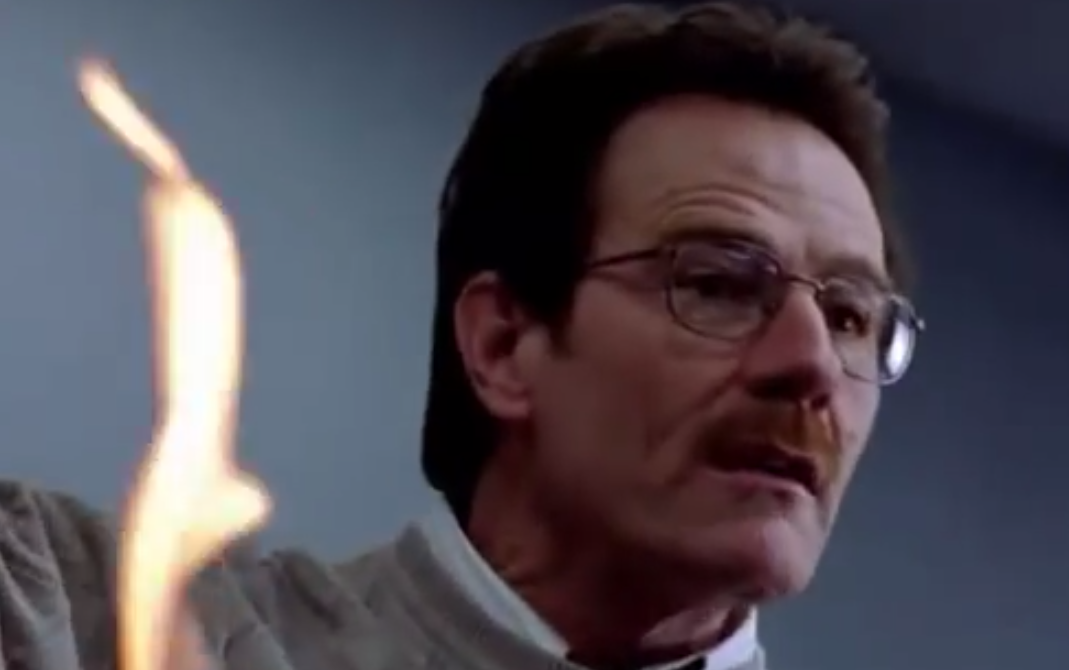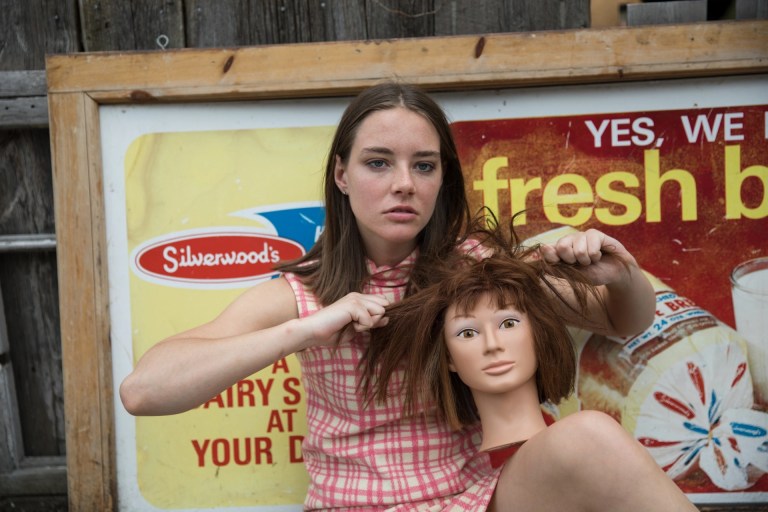Breaking Bad Take One: The Chemistry Of Story
Like all great things, Breaking Bad is multiple, offering many ways in and through. I offer a series of readings.

[youtube http://www.youtube.com/watch?v=-d23GS56HjQ&w=584&h=390%5D
Most serial television shows have characters that stay the same while they navigate more or less different situations (usually, the situations are limited in variety). Think about it for a minute. The whole premise of “Friends” is that Monica is Monica, Ross is Ross, Joey is Joey; on “Seinfeld,” Kramer is Kramer, George is George, Elaine is Elaine. If these characters were to transform, the very grammar of the show would collapse.
This is true of more sophisticated television such as, say, “The Wire.” Jimmy is Jimmy, Bunk is Bunk, Avon is Avon. Sure, McNulty goes sober for a while but it’s not the defining element of the show. And, really, it’s still just Jimmy being Jimmy.
“Breaking Bad” is a horse of another color. The very premise of the show is Walt’s change. It’s not just a shift from good to bad. His change is as unknown to him as it is to us — and as multifarious and complex. This is not a matter of moving to the dark side. Walt’s changes are all hiccups, starting and stopping, veering and spiraling. We see him contend with limits, none of us quite sure where he’s going next. This shifts the very grammar of serial tv, the distribution of sympathy, the play of confirmation and revelation.
The show in fact declares this to us in the very opening scene as we see Walt lecturing to his class. Technically, chemistry is the study of matter, he tells his class, but I prefer to see it as the study of change. And this, alas, is the very grammar of the show. Rather than seeing people as static matter, it sees people are endlessly interacting and changing. We’re all just chemicals interacting with other chemicals — morphing, exploding, bonding, rejecting.
But it’s not that things change any old way. This is not the traditional soap opera in which radical discontinuity is the norm. No, here bodies as matter have properties. Walt might change but his change is immanent to him and his circumstances; this is why we see those flashback scenes of him in grad school — confident, handsome, sexy. Or consider Jessie. He has a distinctive property of playing the child —with his parents, with Walt, with Mike, even with Skyler (These are delicious green beans, Mrs. White) and Fring (He sees something in me). But the form this takes differs depending on with whom he’s interacting: he remains a child but he is a different child with each of these people.
As a result, the show has a very strange play of sympathies. Walt, clearly the center, is not stable. We come to know him, appreciate him, become frustrated with him. But we never identify with him. How can we when he keeps changing? Tony Soprano might be ethically challenged, as it were, but the show works hard for us to feel for him and feel with him. “Breaking Bad” does no such thing. We don’t identify with any one character. We don’t root for Walt; we witness Walt as we witness chemical reaction in a lab or even in nature.
“Breaking Bad” refuses us the humanistic approach of identification. We don’t see ourselves in these characters. With “Friends,” people could say, I’m a Rachel; you’re such a Monica! But that just doesn’t work on “Breaking Bad.” The show demands we be watchers, demands we be empirical. As viewers, we become chemists, watching and assessing the terms of these bodies interacting, trying to understand their laws but mostly just tracking its happening.
Sometimes, we are made to focus on details that confuse and confound us. Indeed, the show repeatedly zooms in on the minor mechanics of things such that all we see is the swirl of bodies, not the plot per se. Often, the literal perspective of the show is unclear and too close for comfort.
But then it pans back and we see how this fits into the greater set of bodies and their interactions. We come to see the floating eyeball as part of an elaborate reaction between Walt, Jessie, Jane, and Jane’s father. We see the skateboard’s wheels as the effect of the Heisenberg principle, as it were. Sometimes, we see the effects — the episodes beginning with the ending — and then are asked to see how they happened, the set of conditions that created this event.
Now, all story is necessarily chemistry. A story is, after all, the way bodies interact with each other and the new conditions this creates. But most serial television insists on recreating the same conditions and results every time, as if confirming the initial experiment ad nauseum.
“Breaking Bad” takes another approach as it relentlessly changes the conditions and hence the effects — and hence the story. This is television as a lab — yes, a lab — its seriality, a relentless experimentation. ![]()




